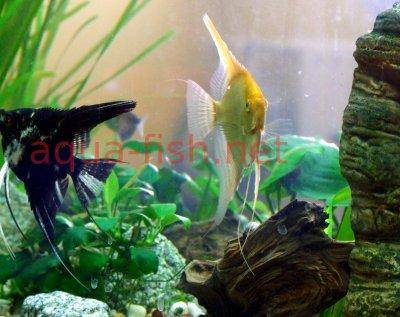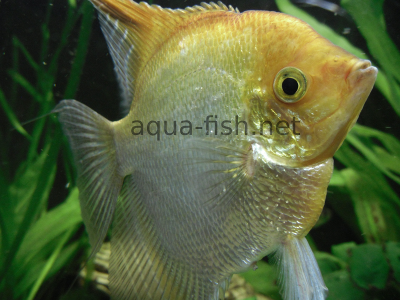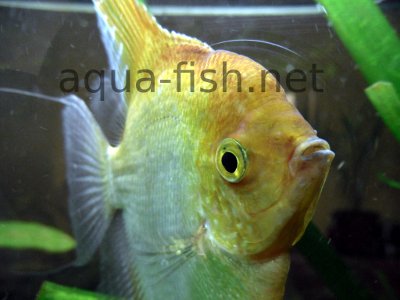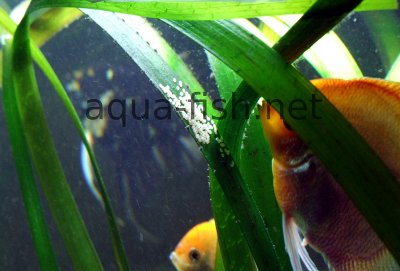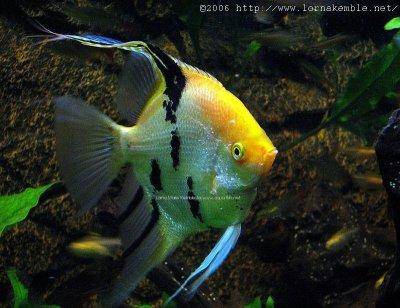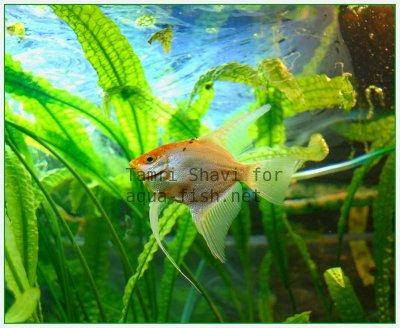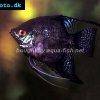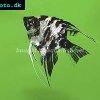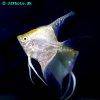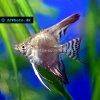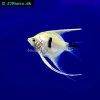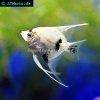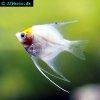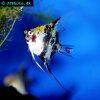Freshwater Angelfish Care: Breeding, Diet, Tank Setup & Expert Tips
Saltwater Angelfish (click to get information)




Quick Navigation
Brief Description
Welcome to our ultimate guide to raising freshwater Angelfish! Whether you're a beginner or an experienced aquarist, this page will help you better understand the care, feeding, tank setup, and breeding of these graceful and intelligent fish.
We’ve also included answers to frequently asked questions and tips from experienced hobbyists. If you have a story or advice to share, we’d love to hear it—scroll down to the comments section!
Looking for more? Check out these related pages:
Introduction and Short History
Angelfish (Pterophyllum scalare) are one of the most popular tropical freshwater aquarium fish. Known for their unique shape and graceful movement, they are often considered among the most beautiful freshwater species available to aquarists.
These intelligent fish tend to interact with their environment. Many owners report that Angelfish react to movement outside the tank and even follow hands placed near or inside the water. Each individual fish often shows its own personality, making them fascinating to watch and care for.
Angelfish originate from South America, especially the Amazon River basin. They were introduced to Europe around 1820 and were first successfully bred in captivity in the United States in 1930. Today, they are widely available in pet stores across the world.
Despite their popularity, many aquarists still make common mistakes when keeping Angelfish—often due to misinformation, inadequate tank setups, or compatibility issues. In this guide, we'll explain everything you need to know to care for them successfully, from tank requirements to breeding and feeding tips.
Habitat
In the wild, Angelfish (Pterophyllum scalare) inhabit the slow-moving blackwater streams and floodplains of the Amazon River basin in South America. These areas are rich in submerged roots, bulrushes, and dense aquatic vegetation, providing natural shelter and breeding grounds.
Angelfish are social fish that often live in loose groups or shoals. While they do well in groups, they also enjoy swimming freely—especially in spacious aquariums. Ideally, a group of 6–7 Angelfish should be kept together. However, if your tank is smaller than 400 liters (105 US gallons / 88 Imperial gallons), it’s acceptable to keep a smaller group of 2–3 individuals in a species-only or peaceful community setup.
The Amazon’s natural vegetation helps Angelfish feel safe and secure. To replicate this environment, include live plants in your aquarium. Species like Alternanthera rosaefolia, Echinodorus amazonicus, and Vallisneria spiralis are excellent choices that mimic their native habitat and offer shade, shelter, and spawning surfaces.
Avoid housing Angelfish with aggressive or predatory species that may stress or injure them. Their laterally compressed bodies are adapted to maneuver quickly between plant stems, allowing them to evade predators in the wild—a behavior you’ll often observe in planted tanks as well. For a list of suitable tank mates, see the Tank Mates section.
Fish Tank Setup and Care
Maintaining the right water parameters is essential for healthy and stress-free Angelfish. The ideal pH level is between 6.0 and 7.0, and the optimal temperature is around 25°C (77°F). Water hardness should remain in the range of 4–12°N dGH (71–214 ppm or 1.4–4.3 mEq).
Stability is more important than hitting exact numbers. Avoid sudden changes in pH, and make sure water hardness changes gradually—no more than 1°N dGH (17.86 ppm) per week. Temperatures above 29°C (84°F) may shorten the fish’s lifespan, so consistent monitoring is crucial.
Angelfish need plenty of space due to their tall, laterally compressed bodies. A general rule is to provide at least 40 liters (10.5 US gallons) per fish. Cramped conditions can lead to fin deformation, growth stunting, and aggressive behavior—especially in adult males when females are nearby.
Tank height is just as important as volume. The minimum height should be 50 cm (19.7 inches) to allow for substrate and a gap at the top. This gives Angelfish around 40 cm (15.7 inches) of vertical swimming space, which is vital for their well-being. Since Angelfish can jump, always cover the tank—gaps as small as 2.5 cm (1 inch) are risky.
Group dynamics matter: Angelfish are territorial, but they generally coexist more peacefully in larger groups than in pairs or trios. If your tank size allows, consider keeping 5 or more together to spread out aggression.
Live plants are more than decorative—they improve water quality, provide oxygen, and serve as spawning sites. Broad-leaved species such as Echinodorus amazonicus are especially recommended. Plants also reduce algae growth and offer shelter for fry, increasing their chances of survival.
While 40 liters per fish is a good rule for general tanks, breeding tanks should be larger. Fry produce more waste, and leftover food can pollute the water quickly. Since breeding setups often use sponge filters—which are gentle but less powerful—it’s even more important to maintain good water volume and perform regular maintenance.
Summary: An Angelfish tank should be at least 100 liters (26 US gallons) for a small group. For a school of 6 adults, aim for a 400-liter (105 US gallons) setup with proper height, live plants, and a secure lid.
Food and Feeding
Angelfish usually prefer flakes over granules or pellets, but a varied diet is crucial for balanced nutrition. Combine multiple food types to keep them healthy and active.
Offer a mix of frozen (or ideally live) larvae, worms, and insects. Always thaw frozen food before feeding. Angelfish also enjoy brine shrimp and Daphnia, both of which are excellent protein sources. If kept in a community tank, they may prey on smaller fish such as Guppies, Swordtails, or Mollies.
While dried foods are convenient, avoid making them the sole diet. These tend to have lower protein content and fewer nutrients. Juvenile Angelfish in particular require a high-protein diet to support growth and fin development. The same applies to breeding adults—protein-rich feeding boosts egg production and encourages frequent spawning (more on this in the Breeding section).
Feeding frequency: Angelfish are not messy eaters and typically eat in small portions. Feed adult fish once or twice a day. They can survive up to two weeks without food, but it's best not to exceed one week of fasting. Juveniles need to be fed 2–3 times daily to support healthy development.
As a general rule, only feed what they can consume in 4 to 5 minutes. Overfeeding leads to poor water quality and can harm both fish and filter efficiency.
Video – Feeding Angelfish Black Mosquito Larvae
Watch our Angelfish feeding on frozen black mosquito larvae in this downloadable video: Click here to download (approx. 55 MB).
Suitable Tank Mates
Angelfish are generally peaceful and can thrive in a community tank when housed with compatible species. Many small to medium-sized tetras make excellent companions:
- Black Skirt Tetra – Gymnocorymbus ternetzi
- Silver Tipped Tetra – Hasemania nana
- Blue Tetra – Boehlkea fredcochui
- Red-Eyed Characin – Arnoldichthys spilopterus
- Splashing Tetra – Copella arnoldi
- Bloodfin Tetra – Aphyocharax alburnus
- False Rummynose Tetra – Petitella georgiae
- Glass Bloodfish – Prionobrama filigera
- Green Fire Tetra – Aphyocharax rathbuni
Other bottom-dwelling and peaceful fish also make good tank mates:
- Peppered Corydoras – Corydoras paleatus
- Mini Cory – Corydoras nanus
- Panda Cory – Corydoras panda
- Elegant Cory – Corydoras elegans (and other Corydoras)
- Discus
- Bushynose Pleco – Ancistrus temminckii
- Butterfly Pleco – Dekeyseria brachyura
- Bristlenose Pleco – Ancistrus triradiatus
- Bristlenose Catfish
Avoid keeping Angelfish with Guppies and Neon Tetras. In the wild, Neon Tetras are part of the Angelfish diet, and they are small enough to be eaten. Guppies are known for fin-nipping, which can stress or injure Angelfish and lead to aggression in return.
Peaceful fish from South American blackwater habitats are often ideal companions—as long as they are too large to fit into an Angelfish’s mouth.
Tip: When introducing new Angelfish into a tank with existing individuals, do so after feeding time and preferably with the lights off to reduce territorial aggression.
Breeding
Most Angelfish reach sexual maturity at around 9–12 months of age, although some individuals may be ready as early as 6 months. At this stage, females typically lay eggs for the first time and can continue to spawn approximately once a month. However, this is not a strict rule—females may need breaks after breeding continuously for 3–4 months. Interestingly, females can lay eggs even in the absence of a male, which helps prevent them from becoming egg-bound.
Since determining the sex of Angelfish is challenging (though males are generally larger than females), it is recommended to purchase a group of 5–6 healthy juveniles and allow them to form pairs naturally. A stronger bond is created when Angelfish choose their own mate. Once a pair forms, they will show territorial behavior and bond for life. If one partner dies, the other usually won't accept a new mate. Pairing is often accompanied by increased aggression toward other fish in the tank.
Once a pair has been established, move them to a separate breeding tank of at least 75 liters (20 gallons), with a height of at least 45 cm (18 inches). A 110-liter (29-gallon) tank is even more suitable. Breeding pairs become highly territorial and may bully other tankmates in a community setup. They prefer soft, slightly acidic to neutral water (pH 6.5–7.0), and a temperature of 26–29.5°C (78–85°F) should be maintained using a heater for stability. Although Angelfish have adapted to various water conditions in captivity, soft water remains ideal for breeding success.
To trigger spawning, consider the following:
- Offer high-quality live or frozen food rich in protein, including larvae, small insects (like flies), and worms.
- Gradually increase the water temperature to 28°C or 29°C (82°F–84°F).
- Include plants with large leaves or provide vertical spawning surfaces such as slates, pipes, or broad leaves.
- Reduce the water flow to create calm conditions.
- Isolate the breeding pair from other fish to reduce stress.
Angelfish begin to spawn when the genital papillae appear. The female’s ovipositor is short and wide, while the male’s is thinner and cone-shaped. A few days before spawning, the pair will clean the selected site by rasping off algae and debris using their mouths. Adding a small amount of methylene blue to the water at this time may help prevent fungal infections on the eggs. The female lays rows of eggs in straight vertical lines, and the male follows to fertilize them. This process can take up to two hours and may result in several hundred eggs—fully mature and healthy females may lay up to 1200 eggs in one spawn.
Angelfish are capable of spawning every 7–14 days under optimal conditions. If the eggs are removed immediately after fertilization, the pair may spawn again within a week. However, as they age (typically after 3 years), their spawning frequency and fertility gradually decline.
After spawning, the parents take turns fanning the eggs and cleaning them. Unfertilized or fungus-infected eggs turn white and are removed by the parents. Inexperienced pairs may eat the eggs, but this usually improves with time. If such behavior persists, check for environmental stressors or consider removing the eggs for artificial hatching.
Approximately 30 hours after fertilization, the eggs begin to hatch. The fry remain attached to the spawning surface and feed on their yolk sacs for the next 5–6 days. During this time, no external feeding is needed. Parents often catch falling fry and place them back, displaying strong parental instincts—though this behavior is more common in wild-caught Angelfish. Captive-bred specimens may show reduced parental care due to generations of breeding in artificial environments.
At around day 6, the fry become free-swimming. This is the optimal time to separate them from the adults to reduce the risk of predation. There are two common approaches:
- Use a soft air tube to siphon the fry gently into a grow-out tank, leaving a few behind if desired.
- Transfer the entire spawning surface (e.g., tile or leaf) with attached fry to another tank—this method reduces stress on fry but may disturb the parents.
If you choose to hatch the eggs artificially, place them in a clean container filled with soft, dechlorinated water at the same pH and temperature as the breeding tank. Use pure reverse osmosis (RO) water or very soft water to ensure oxygenation of the developing embryos—hard water contains large dissolved particles that may hinder gas exchange through the egg membrane. Maintain the temperature close to 29°C (85°F) for optimal hatch rates, and use methylene blue or a small dose of hydrogen peroxide to prevent fungal or bacterial infections. Once the fry hatch, discontinue treatment and perform regular water changes.
From day 7 onward, begin feeding the fry with freshly hatched baby brine shrimp (Artemia salina) four times daily. They may also accept microworms or powdered fry food. Avoid overfeeding, as fry will eat continuously if food is present. Perform partial water changes (about 20%) regularly, being extremely cautious not to siphon the delicate babies. After 3–4 weeks, the fry start resembling miniature Angelfish and can begin eating finely crushed flake food. A protein-rich diet during this stage is essential for proper fin and color development.
At around 9 weeks, the juveniles should be approximately 20 mm (0.8 inches) long and ready to be sold or moved to larger tanks. Remember that as they grow, they will require more space and stronger filtration. Well-fed and well-maintained young Angelfish will develop vibrant colors and full finnage as they mature.
Troubleshooting & Tips
- Parents keep eating the eggs: This is common in young or inexperienced pairs. Provide a stress-free environment, reduce disturbances around the tank, and consider dimming the lights. If the behavior persists, try artificial hatching methods.
- Eggs turn white and don't hatch: These are usually unfertilized or infected with fungus. Ensure the male is successfully fertilizing the eggs, maintain excellent water quality, and use a small amount of methylene blue during the egg stage to prevent fungal infections.
- Low hatch rate: This may be due to hard water, incorrect temperature, or insufficient oxygenation. Use soft or reverse osmosis water, keep temperature stable between 28–29°C (82–84°F), and provide gentle aeration near the egg site.
- Fry dying shortly after becoming free-swimming: Causes include poor water quality, underfeeding, or overfeeding. Perform small, frequent water changes (10–20%), avoid overcrowding, and feed freshly hatched brine shrimp in small portions multiple times a day.
- Fry are not growing well or have deformed fins: This can be caused by poor nutrition or inbreeding. Provide a high-protein, varied diet and avoid breeding siblings repeatedly without outcrossing to unrelated Angelfish lines.
- Difficulty removing fry from the tank: Use a soft air tube and siphon slowly. Never use nets for newly hatched fry. You can also move the entire slate or spawning surface, but do so gently to avoid temperature shock or stress.
- Overly aggressive parents: Some pairs become highly territorial and may injure other fish or even each other. In such cases, use a divider in the tank or separate them entirely after spawning.
- Tank too small for growing fry: As fry grow, their bioload increases rapidly. Ensure good filtration and consider moving them to a larger tank after 3–4 weeks to reduce competition and waste buildup.
Common Diseases
Freshwater Angelfish are generally hardy, but they can be affected by several common diseases, especially if water quality or tank conditions are poor. Below are some of the most frequent health issues that may affect your Angelfish:
Exophthalmia (Pop-Eye)
This condition causes one or both eyes to swell abnormally. Other symptoms may include:
- Bloody or black spots
- Body sores
- Frayed or missing fins
- Tumor-like appearance around the eyes
Causes: Poor water quality, internal bacterial or parasitic infections, and worm cataracts leading to cloudy eyes. Maintain excellent water parameters and quarantine new fish to prevent outbreaks.
Ichthyophthirius (Ich or White Spot Disease)
Ich is one of the most common aquarium fish diseases and appears as tiny white spots on the body, fins, and gills.
Causes: Parasitic infection triggered by stress, high ammonia levels, sudden temperature changes, or introducing new fish without quarantine. Prompt treatment and stable water conditions are essential.
Hunger Strike
This condition occurs when an Angelfish refuses to eat for several days or more. It's often a symptom rather than a disease itself.
Possible causes:
- Stress from new surroundings or aggressive tank mates
- Internal infections or parasites
- Sudden changes in temperature or water chemistry
- Poor-quality or inappropriate food
If an Angelfish stops eating, observe its behavior closely and test water parameters immediately. Isolate the fish if necessary and offer a variety of foods, including live or frozen options.
For a deeper dive into fish health, prevention, and treatment strategies, visit our dedicated article: Aquarium Fish Diseases and Treatments.
Body Varieties
Freshwater Angelfish are available in many stunning color morphs and fin variations. These varieties have been developed through selective breeding and often combine multiple traits. Below are some of the most popular types:
- Golden: Light yellow to soft golden body. Some individuals may have slight iridescence or faint stripes when young.
- Silver: Classic wild-type coloration with silver body and 3–4 bold black vertical stripes. Available in both dark and light variants.
- Koi: Striking red and white coloration, often with black and gold blotches. Juveniles commonly show red markings beneath the eyes.
- Smoky: Half of the body remains silver while the other half fades into smoky grey or near-black. The contrast becomes more defined with age.
- Pearly Gold: Shimmering golden variety with a metallic sheen. Particularly vivid under aquarium lighting.
- Black: Deep, solid ebony color throughout the entire body and fins. Often preferred for their bold, dramatic appearance.
- Black Lace: Black Angelfish with fine, lacy vertical striping. The contrast between the stripes and the base color creates an elegant look.
- Zebra: Similar to silver Angelfish but with more than 4 vertical stripes. Especially striking in larger groups.
- Marble: Silver and black marbled body, sometimes with golden highlights on the head and fins. Patterns are highly variable.
- Blushing: White to pale body with golden markings on the head. Juveniles typically show pink or red blush-like patches under the eyes.
- Blue Blushing: Subtle bluish-grey tone with black outlines. Their color intensity may change with mood or lighting.
- Veiltail: Not a color variety, but a fin shape. Known for their long, flowing fins that can be paired with nearly any color pattern.
Because many of these traits are genetically inherited, mixing two different varieties can produce offspring with unique and unexpected appearances. If you're interested in breeding, it's helpful to understand the dominant and recessive genes associated with each morph.
Essential Information About Angelfish
This section covers the most important facts every Angelfish owner should know—from lifespan and growth to tank size and water testing.
- Lifespan: With proper care, Angelfish can live for 8–9 years. Poor conditions, stress, or improper diet may reduce their lifespan to under 4 years.
- Growth Rate: Angelfish typically grow 0.5–1 cm (0.2–0.4 inch) per month during their first 6–8 months. After that, growth slows.
- Adult Size: Fully grown Pterophyllum scalare usually measure 12–15 cm (4.7–5.9 inches) in body length. Males tend to be larger and may develop extended fins. Angelfish reach adult size between 12 and 18 months.
- Water Quality & Maintenance: Angelfish produce less waste than many other tropical fish. However, if kept with high-waste species like Guppies, Swordtails, or Mollies, the bioload increases. Weekly testing for pH, ammonia, nitrates and nitrites, and carbonate hardness is highly recommended. Clean the substrate regularly using a gravel vacuum, and always replace water with dechlorinated fresh water.
-
Recommended Tank Size: Tank volume should be based on the number of Angelfish. Here’s a quick reference table:
Liters / US Gallons / Imperial Gallons Suggested Number of Angelfish 50 / 13 / 11 1 100 / 26 / 22 2 150 / 39 / 33 3–4 200 / 53 / 44 4–5 250 / 66 / 55 4–6 300 / 79 / 66 4–7 350 / 92 / 77 5–8 400 / 105 / 88 6 - Tank Height & Layout: The aquarium should be at least 40 cm (15.7 inches) tall—ideally 50–70 cm (19.7–27.5 inches). Taller tanks accommodate their vertical swimming and long fins. Use live plants to improve water quality, mimic their natural habitat, and offer shelter for fry and adults.
- Male-to-Female Ratio: Avoid having more males than females, as this can lead to aggression. The best ratio is 1 male to 2 females to reduce competition and ensure harmony.
Pictures of Angelfish
Special thanks to Lorna Marie Kemble and Tamri Shavi for contributing their beautiful Angelfish photographs.
Classic and Wild-Type Angelfish
Black and Marbled Angelfish
Golden and Veiltail Angelfish
Green Flame and Panda Angelfish
Red, Redhead Ghost & Marbled Angelfish
Frequently Asked Questions (FAQ)
This section answers some of the most common questions about freshwater Angelfish. Many additional answers can be found in the comments below. If your question isn’t listed here, feel free to use the contact form at the bottom of the page!
- What should I do if my Angelfish eggs have turned white?
White eggs usually mean they weren’t fertilized or were infected by fungus. Try reducing the water flow so the male can fertilize the eggs more effectively. Add a small amount of methylene blue to prevent fungal growth.
- Why is my Angelfish losing color or developing holes in the skin?
This may be a sign of a fungal or bacterial infection. Move the affected fish to a quarantine tank immediately. Use a quality fungicide or antibacterial treatment. Also, check water quality—poor conditions often trigger infections.
- What pH level do Angelfish prefer?
Angelfish do best in a pH range of 6.0–7.0. They can adapt to slightly more acidic or basic water, but sudden changes should always be avoided. According to the profile at this link, they may tolerate pH as low as 5.3 and up to 7.6.
- How big are Angelfish when they are ready to breed?
They typically begin breeding at 10–12 months of age. At this stage, they are usually around 7–8 cm (2.7–3.1 inches) in body length, though size can vary depending on diet and tank conditions.
- Are some Angelfish varieties more sensitive to water conditions?
Yes. Long-finned and selectively bred varieties (such as Veiltail or Blue Blushing) tend to be more sensitive to poor water quality. Keep the tank clean, stable, and well-oxygenated to avoid fin rot or color loss in these types.
- Where can I buy Angelfish online?
Availability depends on your location. As of 2008, both freshwater and saltwater Angelfish were offered at LiveAquaria.com. Prices ranged from $5–$30 USD for freshwater species, and $26–$580 USD for saltwater ones. Always buy from reputable sources with live arrival guarantees.
Selling Angelfish
If your breeding efforts are successful, you may end up with dozens or even hundreds of juvenile Angelfish. While a single spawn can yield between 10 and 100 fry, experienced breeders sometimes raise over 1,000 healthy juveniles per batch. Keeping all of them is rarely practical, so consider selling or donating the extras.
Ideal selling size: Juvenile Angelfish should be at least 2–3 cm (0.8–1.2 inches) long before being sold. At this size, their survival rate is typically above 95%, especially when fed a high-quality diet such as Artemia salina (baby brine shrimp). Be sure to inform potential buyers that these fish will grow significantly larger over time.
Pricing and profitability: Juvenile Angelfish usually sell for $0.50–$1.00 USD each, depending on the variety, quality, and demand in your region. Adult specimens—especially rare color morphs or proven breeding pairs—can fetch $30–$40 USD or more. Showing photos of the parents can help attract buyers, as many customers want to know what the juveniles will look like as they mature.
Tips for successful sales:
- Raise fry in clean, well-filtered tanks to ensure healthy growth and attractive coloration.
- Gradually wean them onto commercial food before selling, as most buyers may not use live foods.
- Use clear plastic containers or bags for transport, with clean water and oxygen if needed.
- If selling online, always provide accurate photos, tank-bred assurance, and live arrival guarantees when possible.
Many hobbyists also choose to give away excess fry to friends, local schools, or community aquariums. Either way, sharing your success is a rewarding part of the Angelfish-keeping journey!
Conclusion & Final Tips
Freshwater Angelfish (Pterophyllum scalare) are elegant, intelligent, and rewarding fish that can thrive in well-maintained home aquariums. With proper care—balanced feeding, clean water, suitable tank mates, and enough space—they can live long, healthy lives and display natural behaviors such as pairing, spawning, and even parenting their fry.
Whether you're a beginner or an experienced aquarist, Angelfish offer a unique opportunity to observe complex social dynamics, vibrant color varieties, and fascinating breeding behaviors. Remember that patience and consistency are the keys to success when keeping these cichlids.
We hope this comprehensive guide has answered your questions and helped you gain confidence in raising Angelfish. If you’ve already had success with them, feel free to share your experiences in the comments below—your insights can help others succeed too!
Don’t forget: This article is regularly updated. Bookmark this page and check back for new tips, photos, and videos.







